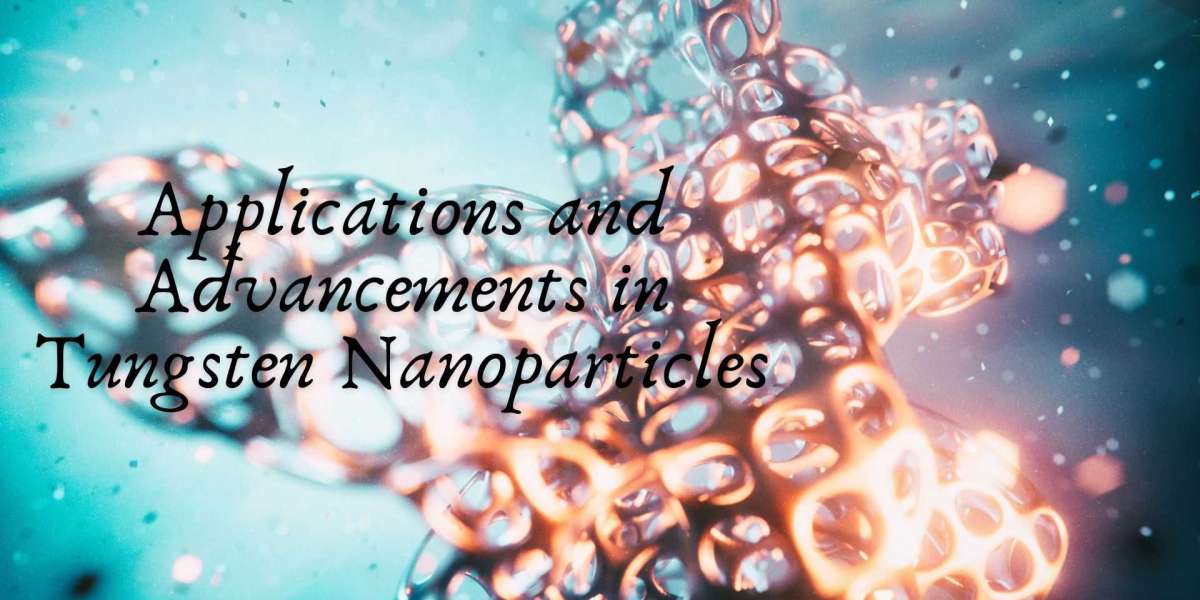Introduction
Tungsten nanoparticles are becoming increasingly significant in various scientific and industrial fields due to their unique properties. As advancements in nanotechnology continue, the potential applications of tungsten nanoparticles expand, promising groundbreaking innovations in multiple sectors. This blog delves into the current applications and recent advancements of tungsten nanoparticles, highlighting their impact and future prospects.
Unique Properties of Tungsten Nanoparticles
Tungsten nanoparticles exhibit several remarkable properties, including high density, high melting point, and excellent electrical and thermal conductivity. These characteristics make them highly desirable for applications requiring durability and performance under extreme conditions. Moreover, their nanoscale size imparts unique optical, catalytic, and mechanical properties that are not observed in bulk tungsten.
Applications in Various Fields
Electronics and Electrical Engineering
One of the most prominent applications of tungsten nanoparticles is in the field of electronics. Due to their excellent conductivity and stability at high temperatures, they are used in the manufacturing of integrated circuits, transistors, and other semiconductor devices. Tungsten nanoparticles enhance the performance and miniaturization of electronic components, paving the way for more compact and efficient electronic devices.
Energy Storage and Conversion
In the realm of energy, tungsten nanoparticles play a crucial role in the development of advanced batteries and fuel cells. Their high surface area and reactivity make them ideal for use as catalysts in fuel cells, improving efficiency and durability. Additionally, tungsten nanoparticles are used in the production of supercapacitors and lithium-ion batteries, contributing to higher energy densities and longer lifespans.
Biomedical Applications
Tungsten nanoparticles are also making significant strides in biomedical applications. Their biocompatibility and ability to be functionalized with various biological molecules enable their use in drug delivery systems, imaging, and cancer therapy. For instance, tungsten nanoparticles can be engineered to target specific cancer cells, delivering therapeutic agents directly to the tumor site and minimizing damage to healthy tissues.
Environmental and Catalysis Applications
Environmental applications of tungsten nanoparticles include their use in water purification and pollutant degradation. Their catalytic properties facilitate the breakdown of harmful substances, making them valuable in environmental remediation efforts. Tungsten nanoparticles are also used as catalysts in chemical reactions, enhancing reaction rates and selectivity, which is beneficial in industrial processes.
Recent Advancements
Synthesis Techniques
Recent advancements in the synthesis of tungsten nanoparticles have led to the development of more efficient and cost-effective methods. Techniques such as chemical vapor deposition, sol-gel processes, and hydrothermal synthesis have improved the quality and uniformity of tungsten nanoparticles, making them more suitable for various applications.
Surface Functionalization
Advancements in surface functionalization techniques have expanded the utility of tungsten nanoparticles. By modifying their surface properties, researchers can tailor tungsten nanoparticles for specific applications, such as enhancing their biocompatibility for medical uses or increasing their catalytic activity for industrial processes.
Integration with Other Nanomaterials
Integrating tungsten nanoparticles with other nanomaterials has opened up new possibilities for hybrid systems with enhanced properties. For example, combining tungsten nanoparticles with carbon nanotubes or graphene can lead to materials with superior electrical conductivity and mechanical strength, which are useful in electronics and energy storage devices.
Future Prospects
The future of tungsten nanoparticles looks promising, with ongoing research and development aimed at unlocking their full potential. As synthesis techniques continue to improve and new applications emerge, tungsten nanoparticles are expected to play a pivotal role in advancing technology across various fields. Innovations in nanotechnology and materials science will likely lead to even more sophisticated and versatile uses for tungsten nanoparticles, driving progress in electronics, energy, medicine, and environmental sustainability.
Conclusion
Tungsten nanoparticles are at the forefront of nanotechnology advancements, offering unique properties that make them invaluable in a wide range of applications. From enhancing electronic devices to advancing medical treatments and improving environmental sustainability, the impact of tungsten nanoparticles is far-reaching. As research continues to unveil new possibilities, tungsten nanoparticles will undoubtedly remain a key player in the quest for technological innovation and advancement.







